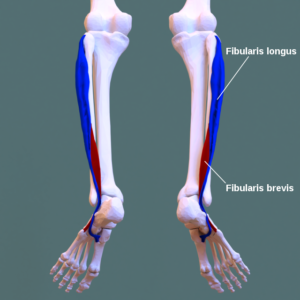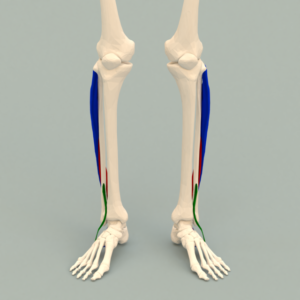![]()
 The fibularis muscles, formerly known as the peroneal muscles, are of particular interest to me as they tend to be a huge issue with so many posture and pain problems.
The fibularis muscles, formerly known as the peroneal muscles, are of particular interest to me as they tend to be a huge issue with so many posture and pain problems.
The word peroneal derives from Greek while fibularis is Latin.
For whatever reason, the lower leg is often left out of the narrative when talking about tight muscles.
The hamstrings are a perennial favorite, but the gastrocnemius and soleus of the calf, and the fibularis, formerly peroneal, are often ignored in discussion of limitations due to inflexibility.
The fibularis are the muscles on the outside of the shin, connecting to and running along the fibula bone before attaching to different bones of the foot.
There are three of these muscles—brevis, longus and tertius.
Fibularis tertius is an interesting muscle that is rarely discussed.
It appeals to me as a muscle likely related to walking on two legs because this muscle isn’t found in many other primates.
 Everyone I work with, whether walking client or yoga student stands before me barefoot.
Everyone I work with, whether walking client or yoga student stands before me barefoot.
I can teach people to walk in shoes or sneakers but feeling the feet on the ground is something that we all need more of. (As an aside, you can’t imagine how many clients I have, that have been told never to walk barefoot again?????)
When someone is standing in front of me unshod, I find that most everyone bears their weight to the outside of the feet. In yoga I am always watching the inner foot in students at the bow forward over the legs.
When the fibularis muscles are tight the inner foot tends to roll up and to the outside.
Though this is exaggerated in the forward bend, when people are stand the same pull to the outer foot is often still evident.
This pull to the outer foot is often related to tight and from my perspective, dysfunctional fibularis, formerly peroneal, muscles.
I have put up many exercises to develop these muscles over the years and
I’ll hopefully have a video up tomorrow that illustrates just how essential these muscles are to good posture and movement patterns.


***
